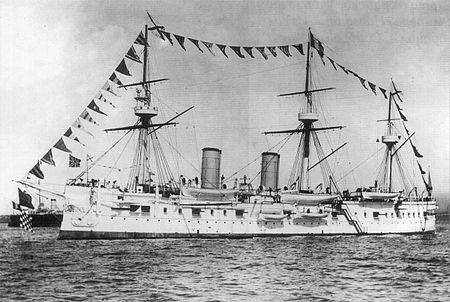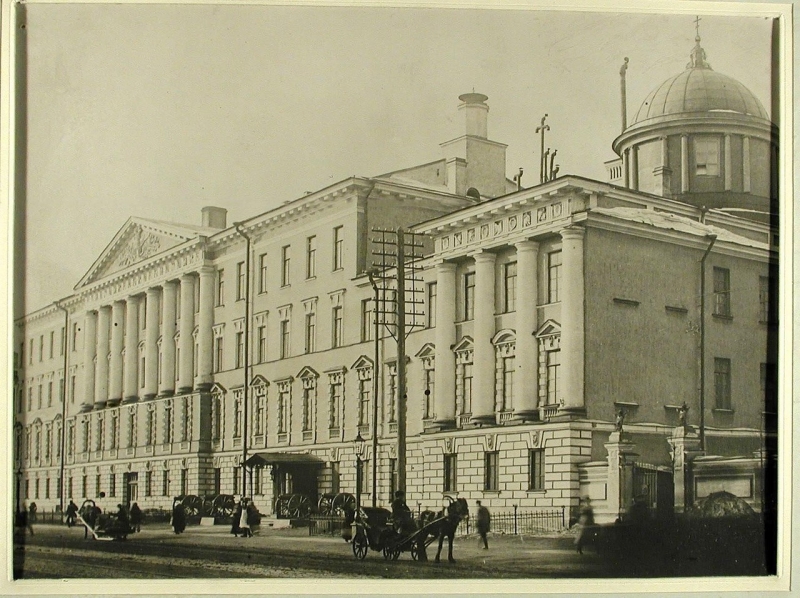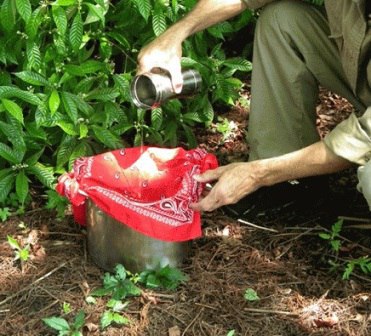
I rank cruiser "Dmitry Donskoy"One of the most important issues of military transformation is rearmament. The development of military equipment, a consequent transition from smoothbore to rifled armaments, It entailed a change in the entire combat training, required different tactics printsipov.Perevooruzhenie army is primarily dependent on the steel industry. AT 1855 Butts was developed instruments of production design of cast steel, and only 1857 Zlatoust year construction began stalepushechnogo zavoda.K top 60s in Russia were created all conditions for the development of domestic production stalepushechnogo. AT 1863 construction began stalepushechnyh plants in St. Petersburg and Perm, They began to cast guns in Petrozavodsk and the Alexander factory. AT 1866 year was approved for field artillery armament, in which all the walking and horse artillery batteries must be threaded, is charged breech guns. 1/3 hiking batteries must be armed with a 9-pound cannons, and all other batteries walking and horse artillery - 4-pounder. The experience of the Franco-Prussian War 1870-1871 years has led to the need to increase the number of field artillery batteries. AT 1873 it was decided to strengthen the structure of artillery brigades to 6 battery (two newly formed battery armed with 9-pounders). AT 1870 by Prof. Maievsky was engineered 4-pound weighted cannon at an initial rate 1700 feet per second. (against 1000 from ordinary). But adopted it was not accepted due to lack of funding. As she modeled at the Krupp plant produces a similar tool for the German Army. In this way, for 12 years (from 1862 by 1874 year) the number of batteries has increased from 138 to 300, and the number of guns - from 1104 to 2400. Birth of Russian screw Fleet during the Crimean War was associated with the development of closer relations shipyards and factories of St. Petersburg and Moscow and Maritime Ministry. AT 1859 year Maritime Authority signed a contract for the manufacture of two motors on 800 l. from. for the frigates "Dmitry Donskoy" and "Alexander Nevsky". The post-war cooperation Navy Department with private industry in 1860 grew into a close alliance, tk. During this period the Naval Ministry was faced with another revolution in naval technology - construction of battleships. Transformation in the field of re-set themselves the task to provide the army with modern weapons and were calculated on the establishment of a domestic military industry. Inventions and discoveries of Russian scientists and engineers Obukhov, Gadolinium, Maievsky, Chernova, Lavrov, Gorlov etc.. It contributed significantly to the implementation of the upgrading program. However, the economic backwardness of the country, an insurmountable obstacle to the re. These difficulties are compounded by the worship of Alexander II and the court before all foreign to the detriment of domestic industry development. Under these circumstances the mid 70s rearmament of the army was far from finished. weapons multisystem, the lack of adequate quantities of heavy and siege artillery, as well as long-range field artillery guns were serious flaw, discovered during the war 1877-1878 s failures in the Crimean War caused serious criticism of the existing system of combat training. Should change the system of training of soldiers: to prepare them to take action on the ground, not only to advice on the parade ground, it was necessary to teach them to read and write, so they performed the service more meaningful.

Konstantinovsky Artillery School
AT 1858 year training battalions were formed to prepare the teachers' skillful shooting ", It has become a practice to the secondment of officers of artillery units and infantry soldiers to train their guns shooting. It was drawn attention to the physical training of soldiers, to this end, in St. Petersburg and Moscow 1858 It was created educational Fencing and gymnastics schools for the training of trainers of gymnastics and fencing. Measures have been taken to promote literacy in the army.
A serious obstacle in the combat training is the lack of funding for the Ministry of War. The second reason, significantly affects the combat training, was the lack of barracks (in them was taken more than a quarter of soldiers, and the rest of the population and houses were going to their units only during summer camps). Reforms in the field of training of troops were due to the development of new tactical principles, the introduction of new weapons and were aimed at training troops to, It is necessary in war. AT 1863 year were abolished cadet corps, and three military schools were opened in their place - Konstantinovsky, Pavlov and Alexander. Duration of training in these two years was, and the amount of each component in the Junkers 300 people. Because, that military schools can not meet the needs in officer personnel, the question arose of creating a military school. In this way, the bulk of the officers had to give cadet schools, created when the military districts. Developed and introduced by the Ministry of War military education system was a significant step forward. The reorganization of the military academies to promote better training of officers of the highest category, but the number of graduates of the Academy was negligible. A major drawback is the lack of short-term senior officers refresher courses. Creation of military schools significantly raised the level of officer training, however, due to an insufficient number of graduates are not satisfied the needs of the army officers, even peacetime. If the infantry and cavalry, this problem is solved due to the cadet school, the artillery and engineering troops of the matter remains unresolved.
Gabriel Tsobehiya











